Edgar Allan Poe’s Haunting Cycle of Vincent Price Films
If The Pale Blue Eye has got you interested in the life and works of Edgar Allan Poe, you need to give Roger Corman and Vincent Price a try.

If you’ve watched the new Netflix mystery drama, The Pale Blue Eye, then you’ve seen a work of fiction in which a young cadet named Edgar Allan Poe (Harry Melling) helps Detective Augustus Landor (Christian Bale) in his attempts to solve a series of murders at New York’s West Point Military Academy.
Of course while the real-life Poe did in fact attend West Point (and was later court-martialed and drummed out, partially on purpose), the man is much better known as the legendary author, poet, literary critic, and editor who is widely regarded as the inventor of detective fiction, a major proponent of the short story, and one of the foundational writers of the horror genre. You know the names of his most iconic tales: “The Pit and the Pendulum,” “Masque of the Red Death,” “The Tell-Tale Heart,” “The Black Cat,” and so on. They’ve become part of popular culture ever since the man’s premature death in 1849 at the age of 40.
While numerous films, stage plays, and television projects have been adapted from Poe’s works, or at least inspired by either them or his life (no less a talent than Mike Flanagan is prepping his version of “The Fall of the House of Usher” for Netflix as we speak), perhaps the most famous remains the eight-film cycle of movies produced and directed by Roger Corman in the 1960s, and released through American International Pictures (AIP).
While Corman’s films often took the basic ideas from the stories and expanded them to feature-length (with the help of esteemed supernatural fiction writers like Richard Matheson and Charles Beaumont penning the screenplays), the movies—nearly all of which starred horror icon Vincent Price—were several cuts above Corman’s usual and extensive B-movie output.
Aside from reading Poe’s work itself (which you should), Corman’s cycle of Poe movies are probably the best place to start to get an idea of the man’s morbid imagination. Plus any self-respecting horror fan owes it to themselves to watch the films, several of which are among the best genre outings of the 1960s. Let’s take a look at each:
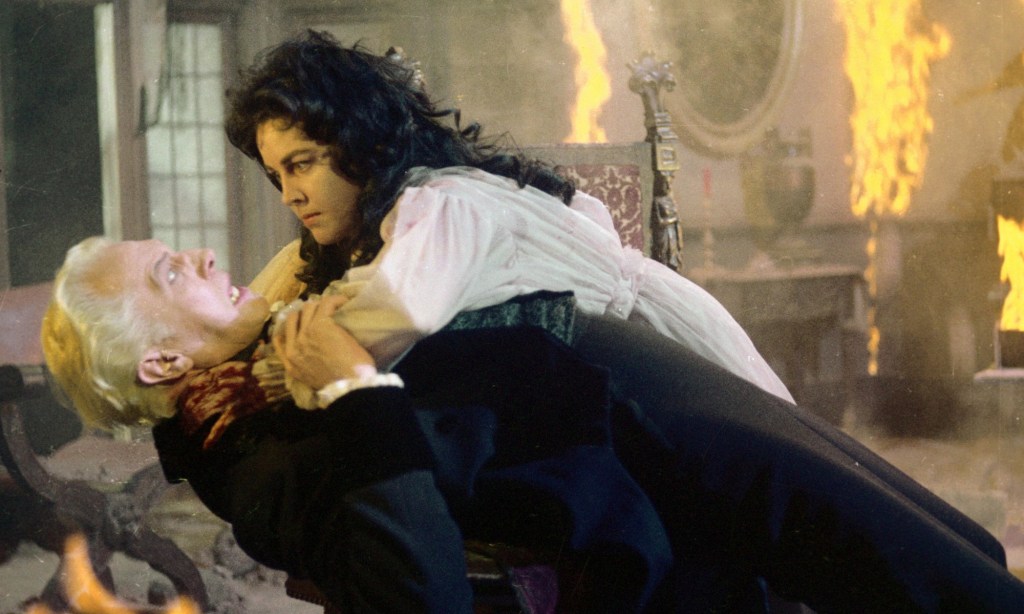
House of Usher (aka The Fall of the House of Usher) (1960)
We’ve written extensively about this film here, but to recap: when asked by AIP to make two cheap black and white horror movies, Corman balked. The master of the B-movie wanted to make a more lavish, literary one in color this time. The result was an outright classic which set the template for the rest of the movies in Corman’s Poe cycle: an atmospheric, decrepit Gothic setting, a level of thematic complexity not often seen in genre pictures, and a story that walked the line between the psychological and supernatural, often featuring depraved or dissolute characters tipping into madness.
Vincent Price is unforgettable as Roderick Usher, a wealthy blue blood who’s convinced that his family line—and the very land their house sits on—is infected with a generations-old insanity that’s consuming him and his sister. An unspeakable relationship between them is implied, and it’s hinted that the house itself is alive with the rot at the center of the Usher history. This is genuinely macabre stuff that still resonates today like the sound of fingernails on stone.
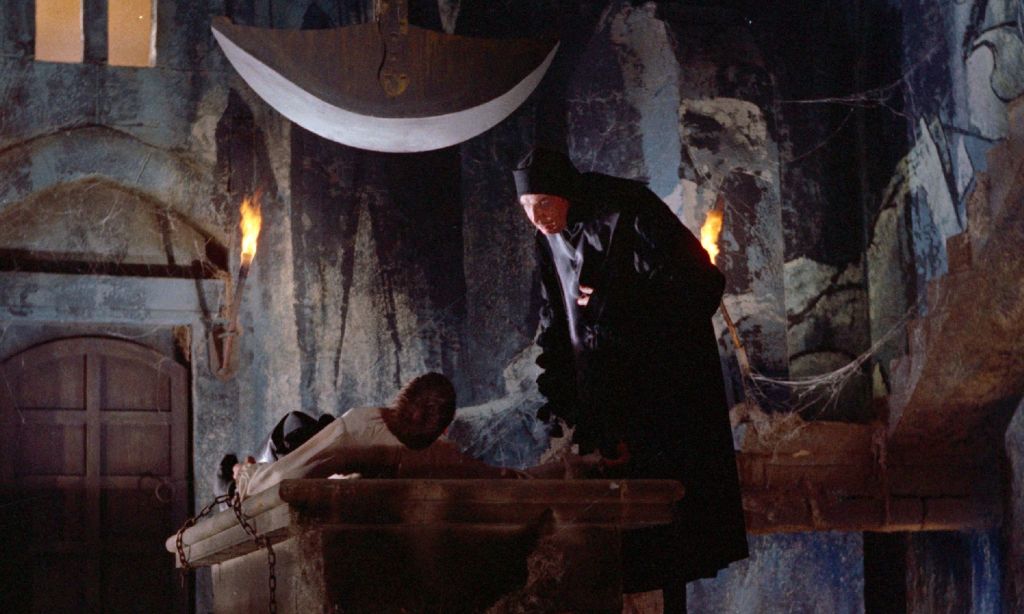
The Pit and the Pendulum (1961)
While House of Usher kicked off the Poe cycle with screaming success, it’s probably the first follow-up, The Pit and the Pendulum, that has remained the most familiar in the zeitgeist thanks to its unmistakable imagery. The story template was basically the same as House of Usher: a young man goes to look into the well-being of a young woman (it was a fiancée in Usher; here it’s his sister), only to find that she is trapped within the malign influence of an older man who’s losing his mind (the brother in House of Usher switches roles with the fiancé in The Pit and the Pendulum).
Price is excellent again as Nicholas Medina, who believes he’s being haunted by the ghost of his dead wife Elizabeth (Barbara Steele). Insanity, live burial, torture, and a secret conspiracy—all happening within the malevolent walls of the Medina castle—lead inexorably to the title setting where Price employs a terrible torture device to kill his perceived enemies. While perhaps not as metaphorically rich as House of Usher, The Pit and the Pendulum is a sumptuous, wildly entertaining Gothic ride, and Price’s descent into madness is a delirious joy to watch.
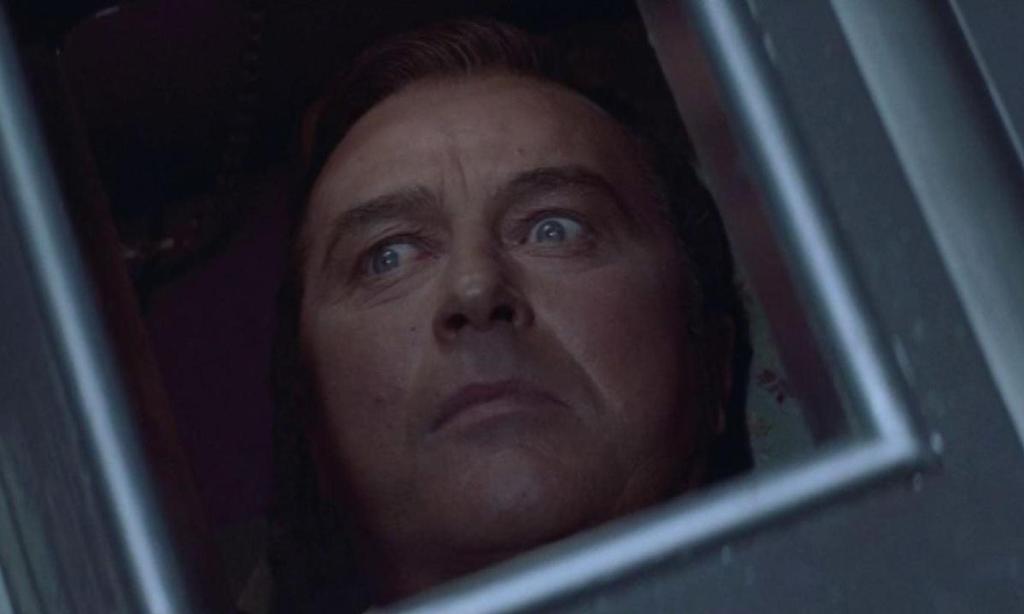
The Premature Burial (1962)
Corman made two Poe movies in 1961, but this one is an anomaly in the cycle as it is the only picture not to star Vincent Price. While Price was under exclusive contract to AIP, Corman started making this film under his own auspices and AIP refused to let Price appear. By the end of production, however, Corman and AIP were back in business, and the series resumed with Price as the star with the next effort.
Meanwhile, The Premature Burial picks up on some of the themes expressed in The Pit and the Pendulum—primarily the fear of being entombed alive and a tormented man’s push toward insanity—and utilizes the same lavish Gothic look, colors, and settings. Star Ray Milland does a credible job but is nowhere near as intense (or darkly humorous) as Price. Although it’s a pretty morbid affair, the entire picture feels like it’s treading the same basic ground as the previous two.
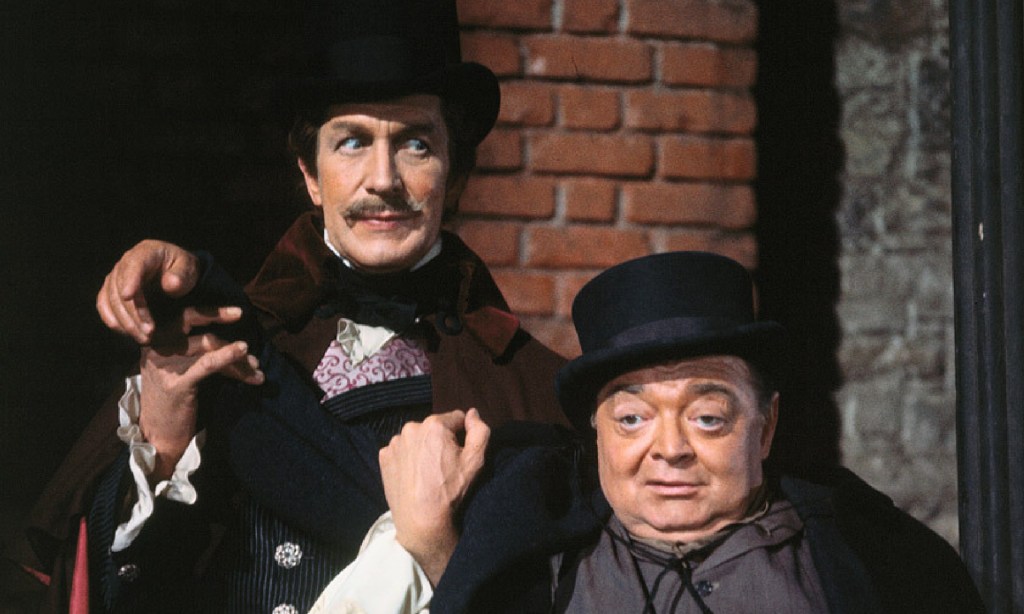
Tales of Terror (1962)
Perhaps feeling like The Premature Burial did little to advance the Poe series, Roger Corman shook things up for the fourth entry, creating an anthology of three tales—the middle of which was a comedy—featuring Price in all three, along with other genre veterans like Peter Lorre and Basil Rathbone.
The first, “Morella,” is more or less along the same lines as the previous three movies, with a woman coming home after 25 years to visit her estranged, dissolute father (Price) who blames her for his wife’s death (she died shortly after giving birth). The dad keeps the mother’s decomposing corpse in their bed and it seems like mom’s spirit also wants to settle the score with her daughter. The third story, “The Facts in the Case of M. Valdemar” (based on one of Poe’s gorier tales), finds Price playing the title character, whose spirit is trapped between the realm of the living and dead by an evil hypnotist (Rathbone), even as his body slowly rots.
But it’s the middle and longest segment, “The Black Cat” (based strangely on that story and “The Cask of Amontillado”) that is the most variant of the three. Price plays a supporting role while Lorre takes center stage as a penniless drunk who plots revenge when his wife, who’s had enough, decides to run off with a much nicer suitor (Price). Lorre decides to seal them both behind a wall in his basement, but his wife’s cat has other plans. The introduction of comedy is inconsistent, but Lorre and Price are still fun to watch. The production values remain strong, and the opening and closing stories both have their moments.
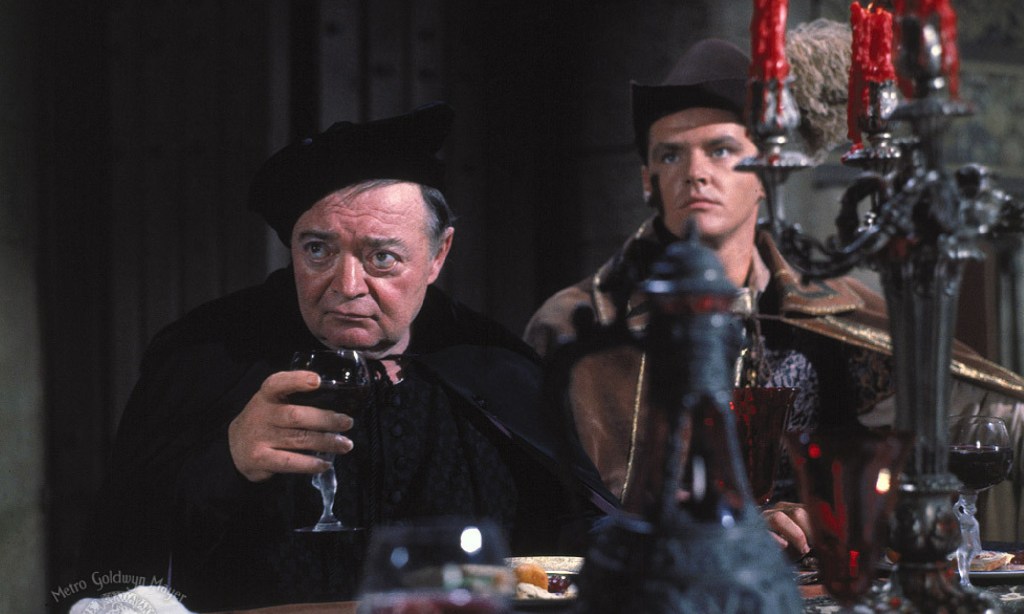
The Raven (1963)
Corman went full comedy with his fifth Poe excursion, taking the title of the author’s most famous poem as well as the setup of another classic poem, “Lenore,” and creating an entirely original dark fantasy. Price and Lorre return from “Tales of Terror” as the magicians Craven and Bedlo (the latter starting out in the form of the title bird), who visit the castle of another wizard named Scarabus (Boris Karloff) to find the ghost of Craven’s wife Lenore (Hazel Court). Instead they discover that she’s alive and well, and living in sin with Scarabus.
A magical duel ensues, and the movie has a number of legitimately funny moments throughout—plus it’s a blast to see Price, Karloff, and Lorre bounce off each other (Lorre’s improvised quips apparently irritated his more formal colleagues). Also along for the ride is a young Jack Nicholson as Lorre’s son, with Nicholson and Karloff sticking around for a couple of days after filming was completed to appear in another Corman horror quickie, The Terror (famously shot on leftover sets from The Raven).
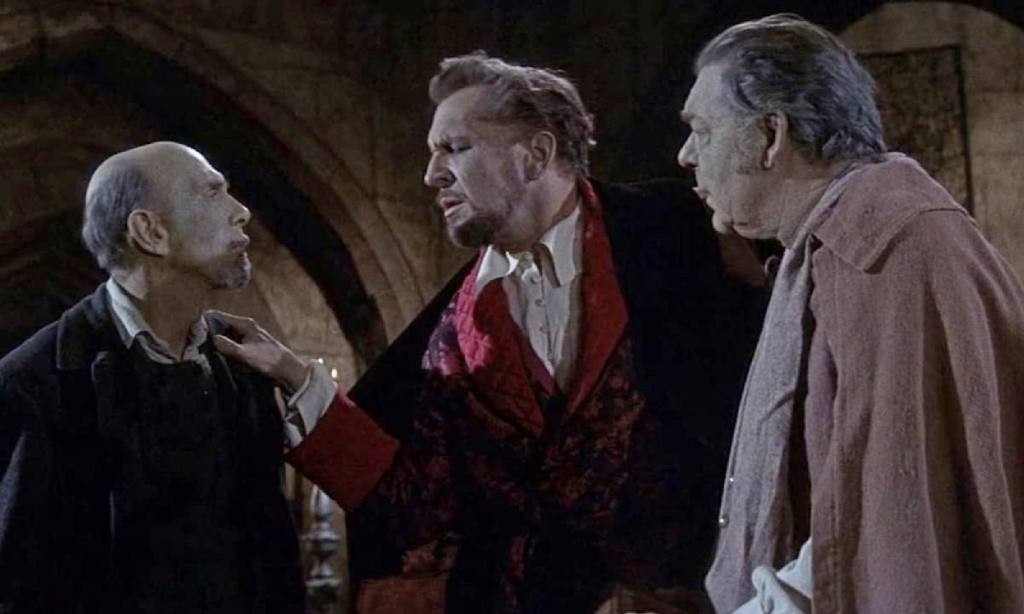
The Haunted Palace (1963)
Corman and AIP really stretched the Poe connection with this entry, which takes its title and absolutely nothing else from a poem and instead adapts a novella—“The Case of Charles Dexter Ward”—from another pioneering horror author, H.P. Lovecraft. Price plays both an evil 18th century sorcerer, Joseph Curwen, and his great-great-grandson Charles Dexter Ward, who returns to the ancestral home in Lovecraft’s famous town of Arkham and learns about Curwen’s occult experiments, many of which left the inhabitants of the town mutated. The descendant is ultimately possessed by Curwen’s spirit, which sets about enacting revenge on the village for burning him at the stake a century earlier.
Although it’s not entirely faithful to Lovecraft’s novella, The Haunted Palace is actually a pretty terrific adaptation of the Providence author’s work, incorporating aspects of his Cthulhu Mythos and trademark themes of Elder Gods and vile, ancient rituals into a movie for the first time. Price is fantastic in his dual role, and it’s nice to see Lon Chaney Jr. in a sizable role. The movie is also drenched in morbid atmosphere, particularly when we meet the deformed townspeople of Arkham or visit Curwen’s dungeon.
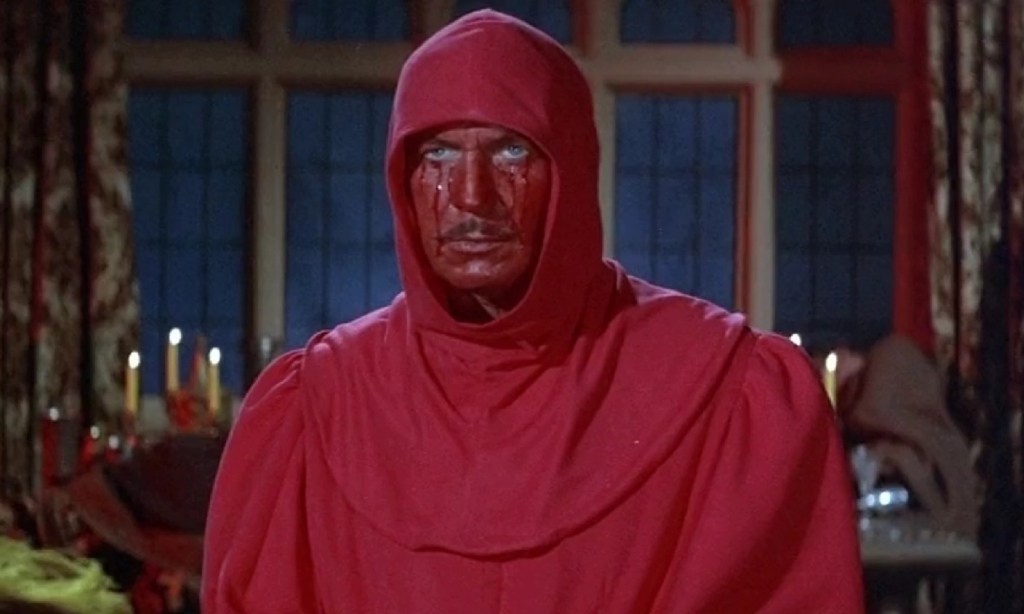
The Masque of the Red Death (1964)
Many consider this the best of the Corman-Poe series, and it’s easy to see why: with this surreal, unnerving tale of the malevolent Prince Prospero holding revels inside his castle as a horrifying plague lays waste to the world outside, Corman elevated everything about his series—the production design, the screenwriting, the metaphorical underpinnings—to create a horror film that is among the most genuinely artistic the genre has ever seen.
Price gives one of his finest performances as Prospero, too, a man devoid of humanity and empathy. Meanwhile Hazel Court and Jane Asher play his mistress and the latest object of his depraved lust, respectively. From the start, with its Bergman-esque opening, The Masque of the Red Death is different from the pulpier pictures in the series, and it’s also the most eye-popping of the bunch, thanks to the opulent cinematography of future Don’t Look Now director Nicholas Roeg. Not surprisingly, it wasn’t as successful with general audiences, but it remains a high point for the cycle, as well as Corman and Price.
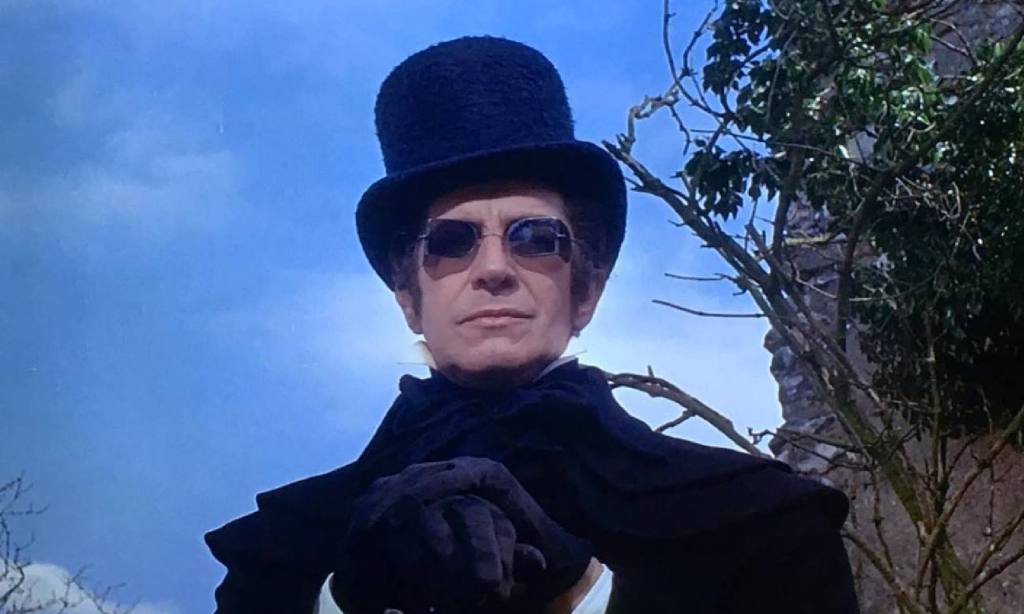
The Tomb of Ligeia (1964)
Benefiting from location shooting at a cemetery and other real places (instead of the usual studio-bound sets), The Tomb of Ligeia finds Corman returning to the series’ roots for its final entry. The story on which the film is based is very short, so the movie is almost a “greatest hits” from the previous films: Price plays the ailing Verden Fell, a man haunted by memories of his dead wife Ligeia and possibly by her spirit as well. A decaying castle, a black cat, reincarnation, and murder all show up in the script by Robert Towne (who later wrote Chinatown), but despite the usual solid work from Price and the always excellent design and atmosphere, there’s a sense that the series is running on fumes.
According to a Cinefantastique interview with Corman, Towne didn’t want Price in the film, as the role was written for a younger man, but AIP demanded that the actor top the bill. Despite that, it was the lowest-grossing of the eight movies in the series and proved to be its swan song. Still, it’s a worthy capper for one of the most unique and in some ways visionary franchises in horror history.
